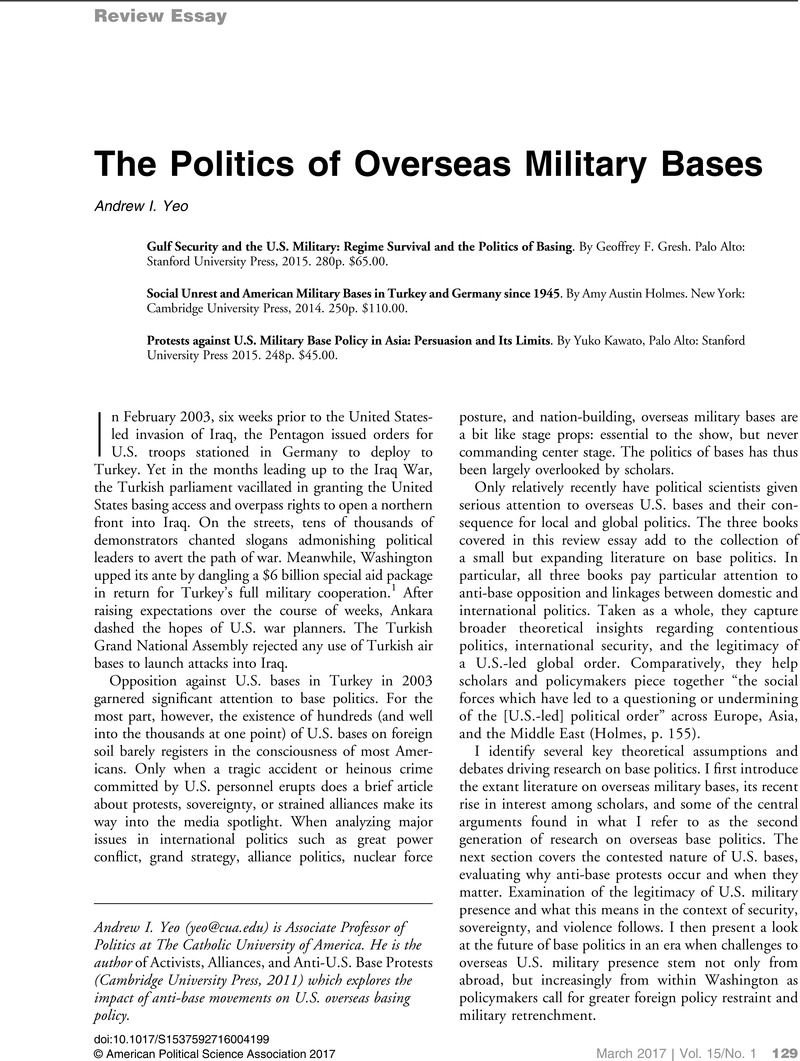Crossref Citations
This article has been cited by the following publications. This list is generated based on data provided by Crossref.
Vine, David
2019.
No Bases? Assessing the Impact of Social Movements Challenging US Foreign Military Bases.
Current Anthropology,
Vol. 60,
Issue. S19,
p.
S158.
Liyew, Estifanos Balew
2024.
Geopolitics of the Red Sea: Implications of foreign military bases expansion to the Horn of Africa security.
African Security Review,
Vol. 33,
Issue. 3,
p.
294.
Smułek, Grzegorz
2024.
NIMBY or YIMBY? Understanding the complex relationships between foreign military bases and host societies.
Moravian Geographical Reports,
Vol. 32,
Issue. 1,
p.
2.
Waldie, Bradford
2024.
Nationalism, Internationalism, and Interventionism: How Overseas Military Service Influences Foreign Policy Attitudes.
International Studies Quarterly,
Vol. 68,
Issue. 4,



